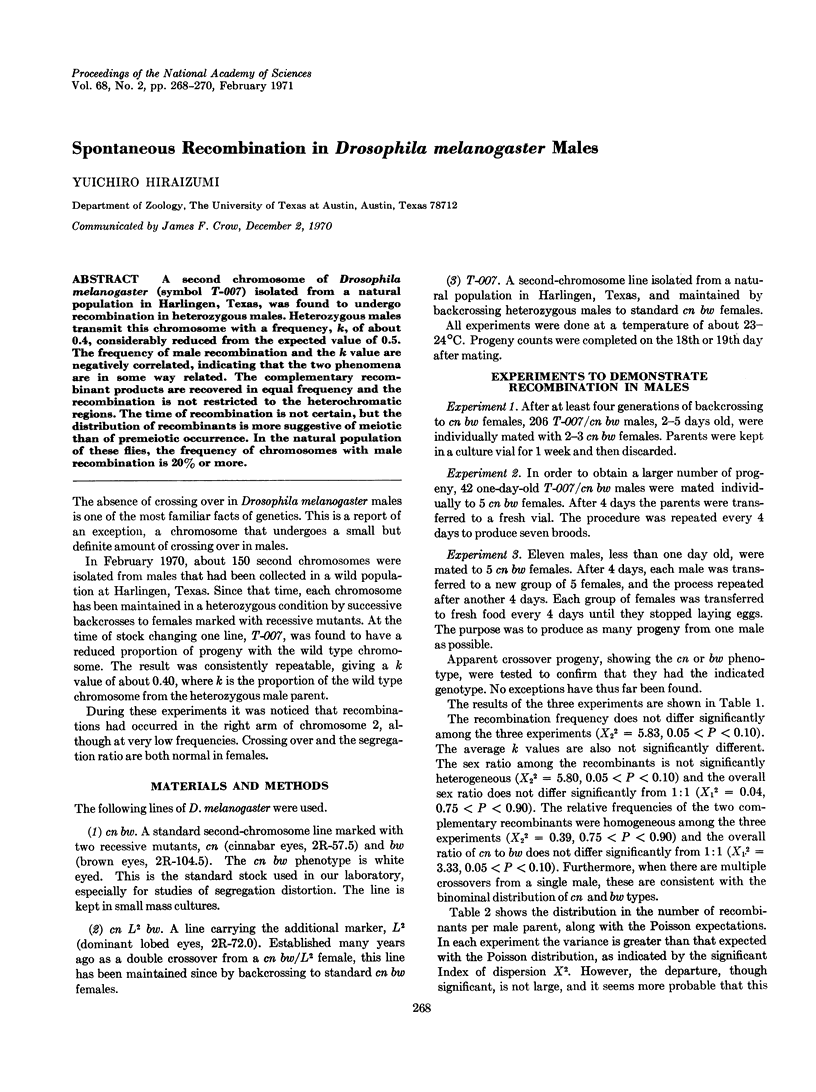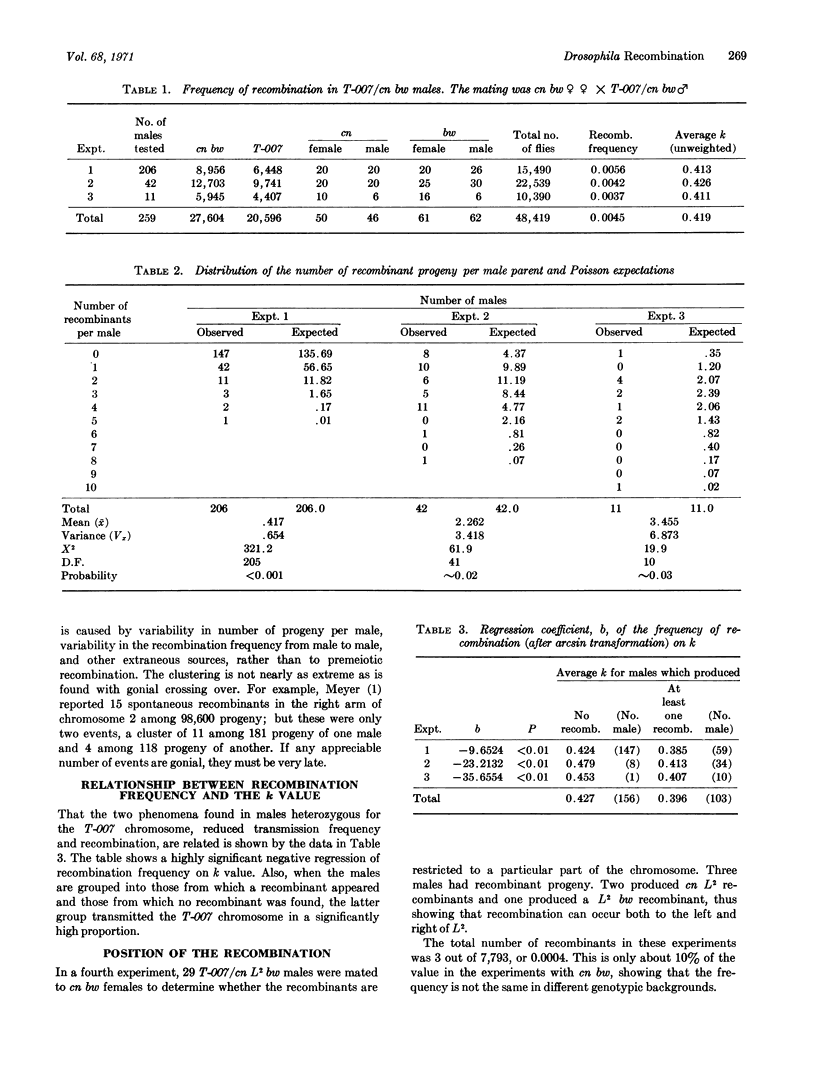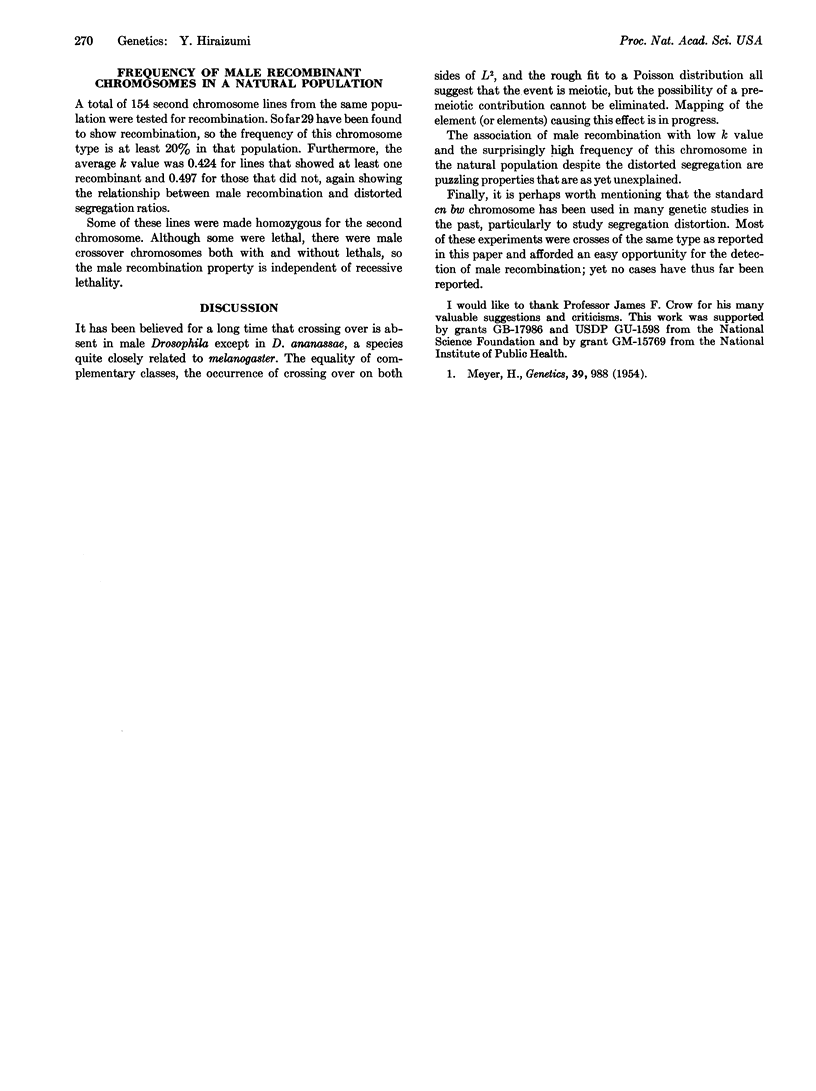Abstract
A second chromosome of Drosophila melanogaster (symbol T-007) isolated from a natural population in Harlingen, Texas, was found to undergo recombination in heterozygous males. Heterozygous males transmit this chromosome with a frequency, k, of about 0.4, considerably reduced from the expected value of 0.5. The frequency of male recombination and the k value are negatively correlated, indicating that the two phenomena are in some way related. The complementary recombinant products are recovered in equal frequency and the recombination is not restricted to the heterochromatic regions. The time of recombination is not certain, but the distribution of recombinants is more suggestive of meiotic than of premeiotic occurrence. In the natural population of these flies, the frequency of chromosomes with male recombination is 20% or more.
Full text
PDF




